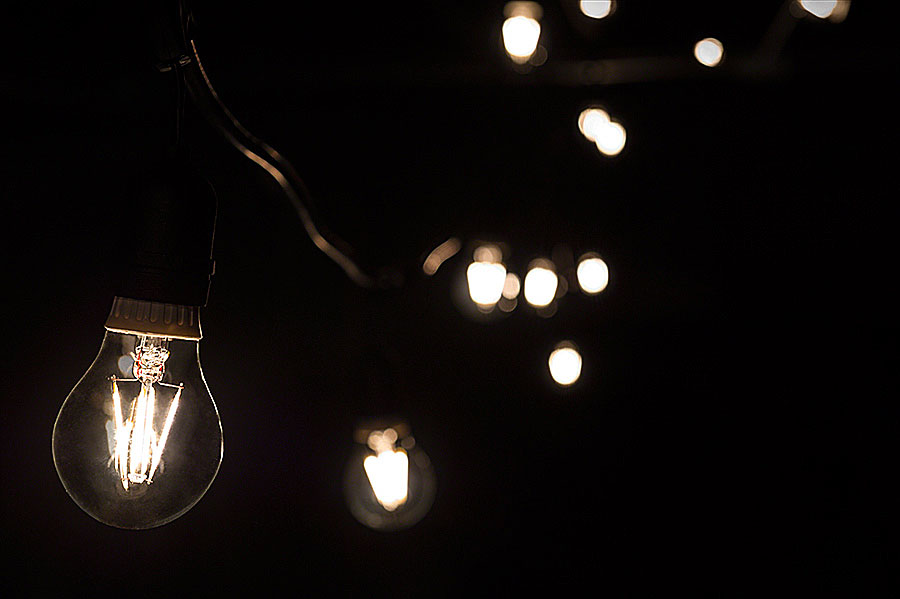Where Are We Going with LED Lighting?
I have a confession. The whole phasing out of incandescent light bulbs has been stressing me out. For decades I refused to make the switch to the ugly and off-colour compact fluorescent bulbs. Then along came LED bulbs [read: garish] and I didn’t even give them a chance. Yes, my conscience bothered me.
When we were warned that soon we would no longer be able to buy our beloved incandescents, I felt panicky. I had visions of running around the city buying up all remaining incandescent bulbs. A (slightly) ridiculous notion that my discretionary budget likely could not support, and besides who spends all their fun money on lightbulbs?
It was then, begrudgingly, that I took my first serious look at starting to replace our old power-hungry orbs with LED models. Familiar-shaped designs and promises of colour temperature choices placated me until I saw the price tags that went along with them. My goodness $20 for a light bulb?!! Return to panic mode! I left the lightbulb aisle and resumed my hoarding fantasy until the sense of guilt began to build again. I turned around and headed back - you need to do this, I coached myself. For the children, I added under my breath.
I purchased a 60W equivalent from the Sylvania Ultra LED line. You know what? It looks great in my bathroom and blends nicely with the existing vanity lights. The colour is really nice and I’m relieved to not end up looking like Frankenstein. Hubby laughed. “You spent how much on a lightbulb?!!” I brushed off his comment, albeit uncomfortably, while silently wondering what I was going to do when the other lights burned out one by one.
“You spent how much on a lightbulb?”
Fast forward a few months and I decided to look into these ‘filament LEDs’ I’d heard about. As it turns out I had already been saving images to my virtual scrapbooks but calling them ‘vintage’ or ‘Edison-style’ LEDs. The filament LED aims to recreate the charm of a vintage incandescent which is something the market has been missing all along. A typical LED bulb deals with heat build-up by incorporating bulky heat sinks into the base of the bulb. This, combined with the directional nature of the LED itself has always constrained both the look (of the bulb itself) and feel of the resulting light output (lack of 360 degree output). Some, like my Sylvania, compensate somewhat by arranging the LEDs in a radial configuration to try to mimic an omni-directional light output.
The filament LED is a clever redesign in which the tiny light emitters are arranged on a strip of glass to make up a ‘filament’ that now allows for 360 degrees of light distribution thanks to the transparency of the glass. The LED strip is then coated in phosphor in order to control the colour temperature giving us a range of choice from a warm vintage glow or a cooler daylight white. The best designs then arrange multiple filaments in zig-zag configurations to cancel out dead spots and achieve a uniform glow.
AXP’s filament LED bulb eliminates the heat sink for improved light coverage

Manufacturers of filament LEDs have also been able to drop the bulky heat sinks thanks mainly to the tiny emitters which give off less heat. These improvements come at the cost of a slight drop in performance – slightly higher power requirements and shorter lifetimes – but we’re talking about a bulb that still makes wins in the green department: 30,000 hour lifespan and 7 Watts compared to the old incandescent standby of 1,000 hours and 75 Watts! This also means, and it may be the best part of all, that a shiny new filament LED bulb can be had at a better price point than the standard offerings.
Drumroll please: stylish, dimmable, omni-directional, responsible, and affordable!

Filament LED producers aren’t the only ones doing the innovating, however. Others such as Italy’s Slamp are looking to shed the heat sink and find novel ways to deal with heat build-up. Their solution is to make use of ultra-high frequency flickering (undetectable to the eye) to lessen heat output and dissipate it through holes in the substrate.
Slamp leaves nothing to chance for its stunning fixtures: tech is created in-house

Designer Elie Ahovi has succeeded in creating a truly beautiful concept piece. Submitted as an entry for the 2012 Braun Prize, it remains to be seen if and when this idea will be picked up and developed for market. Traditional LEDs embedded in the base deliver their light via fibre optics into the bulb cavity in order to achieve a 360 degree output.
Ahovi’s concept: a hybrid of LED and optical fibre delivers new-age light in an age-old package

You may have noticed that much of the focus has been on designing bulbs that look and behave like the incandescents we’ve become used to. If you’re wondering if this is really innovative, then you need to put OLEDs on your radar. By using an organic compound as the light emitter, an OLED (Organic Light Emitting Diode) is freed from the physical constraints of our usual LEDs and can even be formed into flexible thin films. Most of the applications thus far have been flat panel displays but prototypes for décor applications promise to stimulate an interest in developing for this market.
LG Chem prototypes OLED luminaries (Design by Wenzhuo Zhang for OLED Lighting Design Competition 2013)

Although this technology is currently in its adolescence, it’s remarkable to consider that one day in the future you might find yourself printing your own template for an OLED luminary off of your inkjet printer at home!